Modular Dungeon: Kickstarter läuft
Michael von Tabletop Workshop hat seinen ersten eigenen Kickstarter gestartet!
MODULAR DUNGEON is a brand-new construction kit to bring all your personal ideas of 3D dungeons to life. Due to its innovative design all wall elements have a three dimensional depth and are highly flexible. You may create spectacular dungeons, single rooms or just some wall / tile combinations. MODULAR DUNGEON is a low cost construction kit – so you can realise huge dungeon systems easily without spending a little fortune.
Fundamentally MODULAR DUNGEON consists of various different wall and floor tile elements suitable for 28 to 32 mm scale miniatures. A single tile is 30 mm x 30 mm big (1,18 inch x 1,18 inch), so that even miniatures striking dynamic poses fit comfortably onto a single tile. The height of all wall elements is 50 mm, the length is a multiple of the measurement of a paving tile: 30 mm, 60 mm , 90 mm or 120 mm (width 1-4, please see below). Additionally there are several special walls, corner pieces, door frames and columns – similar to a classic LEGO kit. You are able to build a variety of different 3D dungeons in a quick and easy way.
Each original master piece is handmade with particular care and much attention to detail and will be multiplied via castings with Stewalin. Stewalin is a synthetic, plastic-enriched moulding compound with excellent casting precision. It’s extremly hard and has a non-chalky surface.
All MODULAR DUNGEON elements will be delivered white and unpainted. The elements can be glued together by using PVA / wood glue. For painting your elemets we recomment simple acrylic or disperion paints with a water base.
Why is Modular Dungeon so special?
First: the sculptural design! For the walls, individual stones were made in different sizes and stacked on top of each other. The result: realistic and sculptural looking wall elements – not flat and not generic at all. The ideal look for a fantastic fantasy dungeon.
Second: the stunning flexibility! Each wall element can be turned 180 degrees to change the appearance. So identical walls can be used in two ways. For each width of a wall element there are several varying designs, so there are hardly any repetitions. The same is true for the floor tiles. There are three basic floor tile designs. Cracks and effects showing wear and tear give additional variety and create the appropriate atmosphere.
Third: the hidden transitions! Some of the wall elements do have vertical columns. Not only for decorative reasons, indeed they have a function: Two walls next to each other do have a gap where they meet in the centre. Highly visible and less pleasantly looking. But: Using these vertical columns such gaps can be hidden effectively. Even several wall elements put in line seem like they were cast in one piece. With the additional corner elements and the special wall elements nearly all dungeon designs can be realised.
Fourth: the supercool handling! All elements of MODULAR DUNGEON can be glued together with standard wood glue (ideally a fast drying one). As a base for wall and floor tiles you might use simple cardboard. Whereas: the bigger the area to build the sturdier the base should be. For bigger layouts I recommend rigid foam or MDF (medium dense fibreboard) from a DIY store or foam board from art stores. For the painting I recommend simple water based acrylic and dispersion paint. The easy assembly and the atmospheric paint job will be shown in one of the upcoming videos on this project site.
Fifth: the moderate prize! MODULAR DUNGEON is low-priced compared with many other dungeon systems. The main reason is a limited production run just for kickstarter backers in a manual way. Instead of a production on a industrial scale, with additional cost for transport, the MODULAR DUNGEON sets will be produced by myself in my workshop. That means not only reduced costs, but also full control of timing and delivery dates.
And finally: the quick delivery! The design of all elements and the making of the master moulds of the MODULAR DUNGEON production has been done prior to my kickstarter take off. Therefore MODULAR DUNGEON is by now ready to be produced and the manufacturing of the first sets is ongoing during this kickstarter campaign. The Early Bird sets will be sent off to backers by the end of November 2017. The other sets will be sent off by the end of March 2018 at the latest.
If this kickstarter project is successful, MODULAR DUNGEON sets will be ready to order on a regular basis on the website of online trader MiniaturicuM from April 2018. Please note: the price then will be circa 10-15% higher.
Und das sind die Pledges:
The BASIC SET: If you want to test the MODULAR DUNGEON set or plan to build 2-3 rooms, this set is perfect. Consisting of more than 50 floor and wall tiles it allows you to fill an area of roughly 40 cm x 24 cm (16 inch x 9,5 inch) with rooms and corridors. (The mentioned area might vary slightly, depending on your design.) Please note: With this BASIC SET you only get access to the video stretch goals of this campain. The BASIC SET will be offered for € 40,00 during the kickstarter campaign. The future retail price will be € 45,00 minimum.
The CORE SET: Use all the possibilities of the MODULAR DUNGEON system on offer. In comparison to the BASIC SET the CORE SET contains circa 40 more wall and floor elements and additionally several modular columns, a secret door and various damaged wall elements. The CORE SET has a total amount of 90 pieces to built 3-4 rooms or fill an area of roughly 55 cm x 30 cm (22 inch x 12 inch). The mentioned area might vary slightly, depending on your layout of rooms/corridors. And: The CORE SET gives you access to all kickstarter stretch goals. The price for the CORE SET will be on offer for € 55,00 only during the kickstarter campaign. It will be retailed for a minimum of € 60,00 later on.
The CORE SET PLUS: You want your dungeon to be equipped with matching accessories? Then the CORE SET PLUS is your best choice. For only € 30,00 more, you get additionally 2 statues, 2 treasure chests, 5 treasure piles, 7 wall mounted torches and 9 barrels. These accessories made of white metal and resin come from the German tabletop trader Thomarillion and would cost € 34,00 when ordered separately. So you save more than 10% on retail when ordered as part of the CORE SET PLUS. And: The CORE SET PLUS comes with all kickstarter stretch goals. The CORE SET PLUS will be offered at € 85,00 and won’t be available after this kickstarter campaign.
Please note this hint: If you like to pledge multiple CORE SETS and wish to add one or more accessories sets, it’s very easy to do: Just add aditional € 30,00 for each accessories set you want to have in your pledge level. For example: You want to pledge for 3 CORE SETS and 2 accessories sets, it would be an amount of € 225,00 in total (3 x € 55,00 + 2 x € 30,00 = € 225,00).
Die Stretch Goals werden bald bekannt gegeben, für den Moment gibt es diesen Teaser:
Und das sind die Portokosten:
Die Kampagne ist bereits finanziert und läuft noch 30 Tage.
Wir werden die Bauteile des Dungeons noch vor Ende des Kickstarters einem ausgiebigen Test unterziehen!
Quelle: MODULAR DUNGEON bei Kickstarter


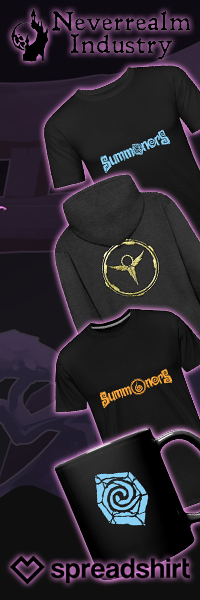








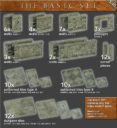

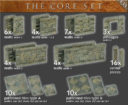
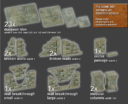


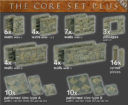
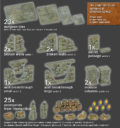


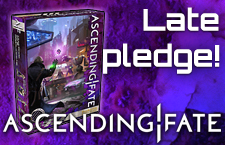
Sehr interessant, die „wall breakthrough“ sind eine Hammer Idee! Wünschte andere Firmen würden das kopieren, für Mauern etc.
Verstehe auch nicht, warum das anscheinend noch niemand gemacht hat 😀
Gefällt mir ebenfalls schon jetzt sehr gut! Die tolle Präsentation tut ihr übriges dazu!
Besten Dank für Lob, Christian 🙂
Nicht mein Setting aber wünsche Michael viel Erfolg mit dem KS.
Danke Dir vielmals 🙂
Immerhin sind die Bodenplatten/Felder etwas größer, so dass das Handling der Miniaturen eher gelingen kann.
Das war eine ganz entscheidende Grundüberlegung, denn 1″x1″ war mir persönlich immer zu klein.
Gleichzeitig sind die Wände wie ein „um 90-Grad gedrehtes U“ aufgebaut: Schau Dir mal oben das Bild „Sizes“ an und Du siehst linksoben quasi den Querschnitt einer Mauer: Oben und unten ist die Mauer 10 mm breit, dazwischen 5-8 mm (je nach Ziegel). So hat man nochmals ein paar mm Platz für seine Minis gewonnen.
Die Prototypen hab ich schon mal in natura gesehen.
Waren da schon sehr schick…
Danke sehr – auf der kommenden Bitbox in Hamburg (am 21.10.) werde ich auch ein paar Ausstellungsstücke zum Anschauen und natürlich Anfassen dabei haben.
Ich spiele leider nix Dungeon-mäßiges, wünsche Michael aber auch viel Erfolg.
Besten Dank dafür 🙂
Ich habe ein Deja Vu… könnte schwören genau diesen Aufbau und Abmessungen schonmal als Vault gesehen zu haben^^
Einziger Fehlerteufel hier: man hat die Wandsektionen 10mm breit gemacht. So entsprechen sie nicht 1/2 Feldabstand, was sie nicht Rasterkompatibel im Aufbau macht.
Jein zum Fehlerteufel 😉
Die Wände hätten sonst 1,5 cm dick sein müssen, was sie deutlich schwerer und damit auch teurer in der Hestellung gemacht hätte. Jetzt „fehlt“ genau 1 cm, um bei einer Fliesenbreite von 3 cm den Abstand zwischen zwei Wänden (je 1 cm) auszugleichen. Und da kommen die Eck-Elemente ins Spiel 😉 Die sind 1 cm breit und tief und passen exakt in so einen Zwischenraum. In voraussichtlich einer Woche wird ein Video erscheinen und ein wenig den Entstehungsprozess und solche Details beleuchten.
Michael Du hättest auch den Rand am unteren Teil der Wand verlängern können. damit hätte die Wand mehr Standfläche gehabt und man hat mehr Raum um etwas ausladendere Miniaturen im Wandbereich zu platzieren, da der Rand zwischen Wand und erster Fliese breiter ist. Wir haben beide das exakt gleiche System für so ein Vorhaben genommen, daher weis ich die Schritte die Du da bei der Entwicklung gemacht hast genau^^
Aber non the less ein sehr schicker Dungeon! Ich wünsche dem Ganzen einen ordentlichen Erfolg!
Ich hätte die „Standfläche“ der Mauern aber auch jeweils oben UND unten verlängern müssen, denn alle Wände lassen sich umdrehen und so auf 2 Arten verbauen. So hat man mehr Abwechslung. Zwar sind alle Mauerteile in einem Set ohnehin unterschiedlich, aber wenn Du zwei Sets hast, kannst Du durch das Umdrehen optische Dopplungen vermeiden. Selbst auf einer großen Spielplatte wird man Dopplungen quasi mit der Lupe suchen müssen.
Danke Dir vielmals für Deine Wünsche 🙂
Sehr cooler dungeon. Habe leider schon so viel modularen Dungeonkram, dass ich hier wohl passen werde. Wünsche trotzdem gutes Gelingen und viel Erfolg.
Danke sehr 🙂
Ich hab da mal ne Frage:
Lässt sich ein Dungeoncrawl überhaupt mit so einem modularen System mit Wänden spielen?
Ich habe schon ewig im Hinterkopf, mal sowas fürs alte Heroquest zu bauen (meine Herren, ist das lange her 👴) – nur aus Spaß an der Freud‘.
Aber kürzlich ging mir auf, dass das zwar sehr hübsch aussieht, aber doch irre stören muss, weil man vor lauter Wänden seine Miniaturen nicht mehr sieht – besonders wenn dann noch Regale u.Ä. hinzu kommen. Oder täuscht das?
Ich kann mich erinnern, mal im Netz ein Projekt gesehen zu haben, bei dem der Macher die Wände nur angedeutet hat (vllt. 1 cm hoch) und nur die Türstöcke modelliert hatte. Wäre das nicht besser?
Natürlich geht das, dafür und für Systeme wie z.B. „Frostgrave“ habe ich das MODULAR DUNGEON-System ja ursprünglich entworfen.
Ja, eine 28 bzw. 32mm-Mini wird von den Mauern überragt, aber ist fürs Handling kein Problem. Denn die Fliesen sind nicht die üblichen 1″ x 1″ sondern 3cm x 3cm groß. Bei einem 2-Fliesen breiten Gang sind also 6 cm Platz für eine Hand bzw. Finger zum Reingreifen (bei einer Breite von 3 Fliesen bereits 9 cm (statt rund 7,5 cm bei 3″-Fliesen). Gleichzeitig sind die Wände wie ein „um 90-Grad gedrehtes U“ aufgebaut: Schau Dir mal oben das Bild „Sizes“ an und Du siehst linksoben quasi den Querschnitt einer Mauer: Oben und unten ist die Mauer 10 mm breit, dazwischen 5-8 mm (je nach Ziegel). So hat man nochmals ein paar mm Platz gewonnen.
Danke für die Antwort.
Super, dass das mit dem Kickstarter so gut geklappt hat. Wird bestimmt ne Menge Arbeit!
Ich werd dann mal des anstehenden Videos und Reviews harren. Ich bin nicht so der Kickstarter-Typ, aber merke mir auf jeden Fall mal den nächsten April vor.
Mein großes Problem beim Abschätzen der Größe ist, dass ich leider noch keine Frostgrave Figuren in der Hand hatte – bin da eher auf Nottingham eingenordet. Mir kommts halt nach wie vor frickelig vor, aber andererseits hat ja auch nicht jeder so Wurstfinger wie ich…
Wow also modulare Dungeonsysteme sprechen mich schon eine ganze Weile lang an. Hier jetzt zu einem wirklich super Preis! Ich bleibe am Ball!
Gerne – am Montag gebe ich auf der Projektseite die Stretch Goals mit diversen Gratis-Bauteilen für die CORE SETS bekannt 🙂
Uhh, ok also vielleicht steige ich ein, obwohl ich momentan weder Mittel noch Zweck habe. Falla nicht, dann aber in der späteren Version sicher mal!
Dir in jedem Fall alles Gute uns ganz viel Erfolg damit! Sieht wirklich toll aus, auch die unterschiedlich tiefe Struktur finde ich super!
Danke Dir vielmals 🙂 Und als kleinen Hinweis, weil Du evt. später einsteigen möchtest: Die Sets wird’s ab April 2018 dann auch bei MiniaturicuM geben. Sie laufen also nicht weg 😉
JUNGE, JUNGE! Da schläft man mal aus, und dann kommt SO ein Oberhammer!!!
DANKE an die BK-Jungs! Für so was lese ich Eure Seite. Und im Gegensatz zu vielen anderen News sehe ich hier sofort den „Sinn“!!!!
Kleine ANMERKUNG meiner seits: wären „fertige“ Teile, die man nicht erst zusammen bauen muss, also Standard Kreuzungen, Eingänge u.s.w. Nicht eine TOLLE Idee? Oder anders „gefragt“: Wie lange braucht derr Zusammenbau?
Beste Grüße,
Der Uwe
Der Zusammenbau ist relativ fix erledigt, wenngleich durch den (Holz-)Leim natürlich Trocknungszeiten anfallen. Im Prinzip überlegt man sich anhand der vorhandenen Teile einen Grundriss und klebt zunächst die Fliesen auf ein Stück dickere Pappe, MDF, Schaumpappe oder Hartschaum/Styrodur (deren Dicke hängt vom persönlichen Geschmack und natürlich auch ein wenig von der Größe des geplanten Areals ab. Ich hab einiges auf simple Pappe geklebt). Dann werden die Wände neben die Fliesen geklebt. Während der Leim antrocknet, stelle ich gerne ein paar Bauklötze hinter die Wände, damit alles senkrecht bleibt und ich nichts festhalten muss. Abschließend werden die Eckstücke eingeklebt. Sobald der Leim dann komplett durchgetrocknet ist, kann’s mit der Bemalung losgehen.
Fertige Teile, wie Du sie Dir vorstellst, wären vielleicht fürs Sofort-Losspielen bequemer, aber dann wäre das Set nicht so flexibel. So kannst Du mit den rund 90 Elementen eines CORE SETS nahezu jeden Grundriss als 3D-Raum nachbauen. Kommende Woche wird im TWS-YouTube-Kanal ein Video erscheinen, das einige Beispiele zeigt.